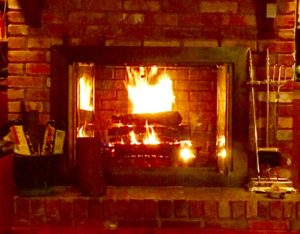Fireplace & Chimney Safety
go.ncsu.edu/readext?757021
en Español / em Português
El inglés es el idioma de control de esta página. En la medida en que haya algún conflicto entre la traducción al inglés y la traducción, el inglés prevalece.
Al hacer clic en el enlace de traducción se activa un servicio de traducción gratuito para convertir la página al español. Al igual que con cualquier traducción por Internet, la conversión no es sensible al contexto y puede que no traduzca el texto en su significado original. NC State Extension no garantiza la exactitud del texto traducido. Por favor, tenga en cuenta que algunas aplicaciones y/o servicios pueden no funcionar como se espera cuando se traducen.
Português
Inglês é o idioma de controle desta página. Na medida que haja algum conflito entre o texto original em Inglês e a tradução, o Inglês prevalece.
Ao clicar no link de tradução, um serviço gratuito de tradução será ativado para converter a página para o Português. Como em qualquer tradução pela internet, a conversão não é sensivel ao contexto e pode não ocorrer a tradução para o significado orginal. O serviço de Extensão da Carolina do Norte (NC State Extension) não garante a exatidão do texto traduzido. Por favor, observe que algumas funções ou serviços podem não funcionar como esperado após a tradução.
English
English is the controlling language of this page. To the extent there is any conflict between the English text and the translation, English controls.
Clicking on the translation link activates a free translation service to convert the page to Spanish. As with any Internet translation, the conversion is not context-sensitive and may not translate the text to its original meaning. NC State Extension does not guarantee the accuracy of the translated text. Please note that some applications and/or services may not function as expected when translated.
Collapse ▲Original article by: Shelby Kimes
Focus on Fireplace Chimney Safety
Santa won’t be able to come cascading down your chimney if it doesn’t meet proper safety standards. Sorry, those are the rules. Fortunately, you have time to make sure your fireplace is up to par before Saint Nick makes his annual run.
Fireplaces are wonderful; they look beautiful when they’re lit and it’s a good way to keep your house warm without running up the power bill. But, if they aren’t taken care of, they can cause harm to you and your family. So, what are the dangers of an unsafe fireplace and what can you do to make sure your fireplace is safe?
The top three problems caused by poorly maintained fireplaces and chimneys are carbon monoxide poisoning, chimney fires, and premature failure of the fireplace and chimney. Carbon monoxide poisoning claims about 4,000 lives a year in the US. Carbon monoxide is a byproduct of combustion and needs a place to be safely ventilated. Cue, the chimney. Chimneys that aren’t correctly maintained can fail to properly dispose of carbon monoxide. To make sure you’re never exposed to dangerous levels of carbon monoxide, install a carbon monoxide detector if you don’t already have one and make sure it’s working properly. Carbon monoxide detectors save thousands of lives every year.
Chimney fires are also a result of poorly kept chimneys. When the smoke from fire comes in contact with creosote (a black or brown gummy residue that builds up in the flue of the chimney) it could catch fire. If a noise emits from your chimney that sounds like a low flying jet, odds are it’s a chimney fire. By routinely cleaning creosote out of your chimney you reduce the chances of a chimney fire significantly.
Failure of the basic structure of the chimney is possible too. Premature chimney failure is mostly caused by frequent chimney fires that threaten the integrity of its motor joints and cause cracking. The estimated average cost of fixing cracks in a chimney is $175, to rebuild a chimney from the roofline down—$1,000 to $3,000.
There are ways to prevent costly damages to your fireplace and chimney. All these fireplace hazards are almost entirely preventable; if you use your fireplace 3 times a year or more it should be cleaned yearly. Learn more from the Chimney Safety Institute of America about how to hire a professional chimney sweep.
—
Shelby Kimes is a Marketing Content Writer in the marketing department for NC State Industrial Expansion Solutions. She writes marketing content for various IES and media platforms to communicate the services and values of IES. She also writes the marketing material needed to alert existing and/or potential clients of any updates within IES. She previously interned with the marketing department at Greenville Parks and Recreation in North Carolina. Shelby graduated from East Carolina University with a Bachelor’s in Sports Studies and a Minor in Marketing/Business Administration.
https://www.ies.ncsu.edu/blog/focus-on-fireplace-chimney-safety/





